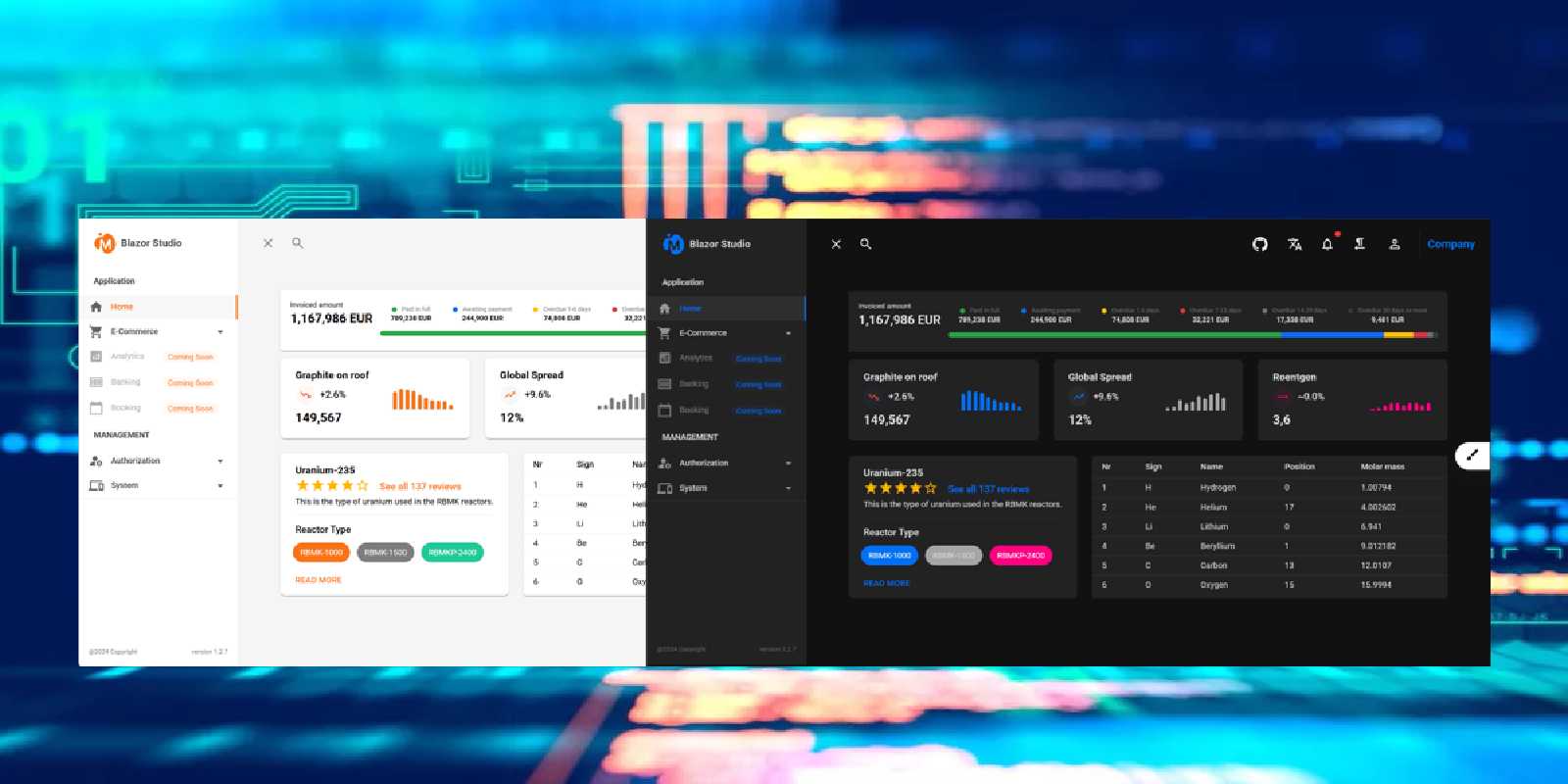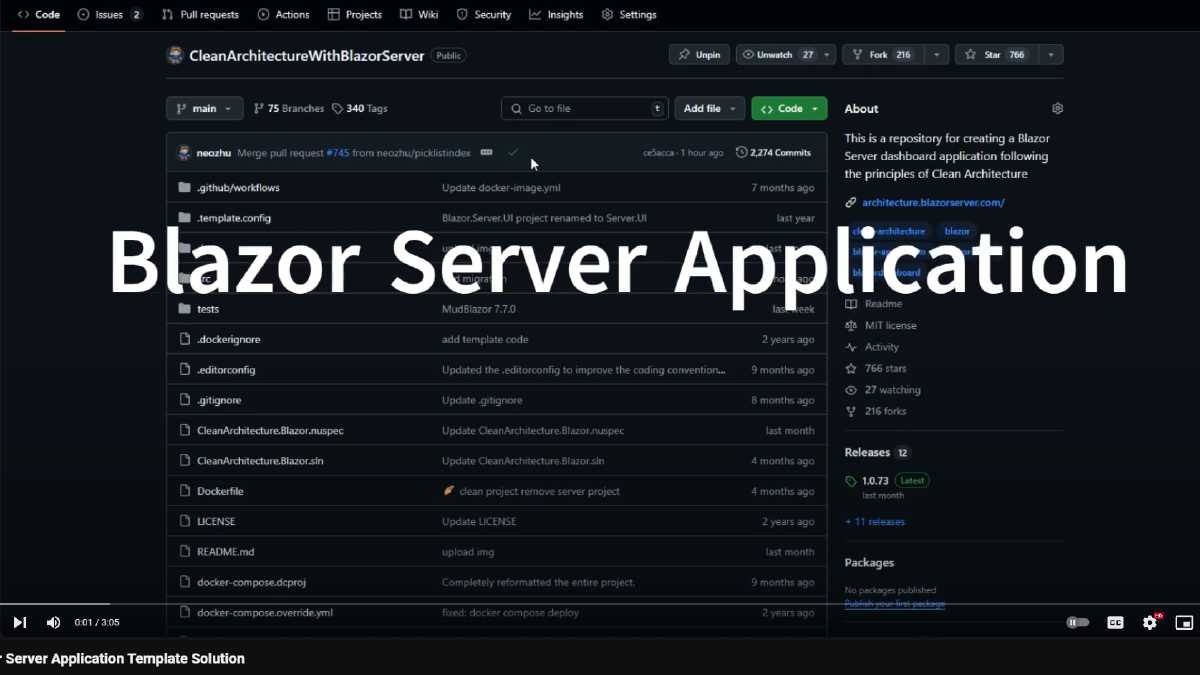Clean Architecture With Blazor Server

This project showcases a Blazor Server application meticulously designed using Clean Architecture principles. It features a sophisticated user interface and an integrated, efficient code generator.
Built on .NET 9, the application benefits from enhanced performance, improved developer productivity, and a smoother development workflow. .NET 9’s full support for Blazor Server combines the power of C# with a modern web development experience, eliminating the need to constantly switch between JavaScript and C#. This streamlined setup simplifies development, enabling the creation of fast, responsive, and highly interactive web applications. By leveraging Blazor’s real-time communication capabilities and the robust .NET ecosystem, developers can rapidly build feature-rich, scalable applications that offer a seamless user experience.
Why Blazor Server?
Blazor Server is my preferred approach to building web applications. It enables a focused development experience—writing everything in C# without constantly switching back and forth with JavaScript. This simplifies not just productivity, but also long-term maintainability.
Thanks to SignalR, Blazor Server supports real-time UI updates, which makes it perfect for admin dashboards, workflow systems, document OCR applications, and organizational charts. In this template, I have also included Hangfire for scheduled task dashboards and built-in OAuth2 login integrations.
Key Features
- Clean Architecture Design: Adheres to clear separation of concerns with Domain, Application, Infrastructure, and UI layers.
- Built-in Authentication: Includes pre-configured authentication options for Google, Facebook, and Microsoft.
- Containerization Support: Offers Docker and Docker Compose configurations for production-ready deployments.
- Visual Studio 2022 Extension: CleanArchitecture CodeGenerator for rapid feature scaffolding.
- Real-World Examples: Includes practical examples such as Digital Product Passport (DPP) and HSE (Health, Safety, and Environment) management systems.
- Database Flexibility: Provides support for PostgreSQL, MSSQL, and SQLite databases.
- NuGet Package Template: Available as a NuGet template for quick project initialization.
Demos
- Live Demo: architecture.blazorserver.com
Docker Compose Deployment
version: '3.8'
services:
blazorserverapp:
image: blazordevlab/cleanarchitectureblazorserver:1.2.10
environment:
- UseInMemoryDatabase=${USE_IN_MEMORY_DATABASE}
- ASPNETCORE_ENVIRONMENT=${ASPNETCORE_ENVIRONMENT}
- ASPNETCORE_URLS=${ASPNETCORE_URLS}
- ASPNETCORE_HTTP_PORTS=${ASPNETCORE_HTTP_PORTS}
- ASPNETCORE_HTTPS_PORTS=${ASPNETCORE_HTTPS_PORTS}
- AppConfigurationSettings__ApplicationUrl=${APP_URL}
- AppConfigurationSettings__AppName=${APP_NAME}
- DatabaseSettings__DBProvider=${DB_PROVIDER}
- DatabaseSettings__ConnectionString=${DB_CONNECTION_STRING}
- SmtpClientOptions__User=${SMTP_USER}
- SmtpClientOptions__Port=${SMTP_PORT}
- SmtpClientOptions__Server=${SMTP_SERVER}
- SmtpClientOptions__Password=${SMTP_PASSWORD}
- SmtpClientOptions__DefaultFromEmail=${SMTP_DEFAULT_FROM}
- Authentication__Microsoft__ClientId=${MS_CLIENT_ID}
- Authentication__Microsoft__ClientSecret=${MS_CLIENT_SECRET}
- Authentication__Google__ClientId=${GOOGLE_CLIENT_ID}
- Authentication__Google__ClientSecret=${GOOGLE_CLIENT_SECRET}
- Minio__Endpoint=${MINIO_ENDPOINT}
- Minio__AccessKey=${MINIO_ACCESS_KEY}
- Minio__SecretKey=${MINIO_SECRET_KEY}
- Minio__BucketName=${MINIO_BUCKET}
ports:
- "8014:80"
- "8015:443"
Tip: Replace environment variables (like ${SMTP_USER}) with your actual configuration values.
License
This project is licensed under the MIT License, a permissive open-source license. You are free to use, modify, and distribute the code for personal or commercial purposes, provided the original license and copyright notice are included.
 neo.js.cn@gmail.com
neo.js.cn@gmail.com
